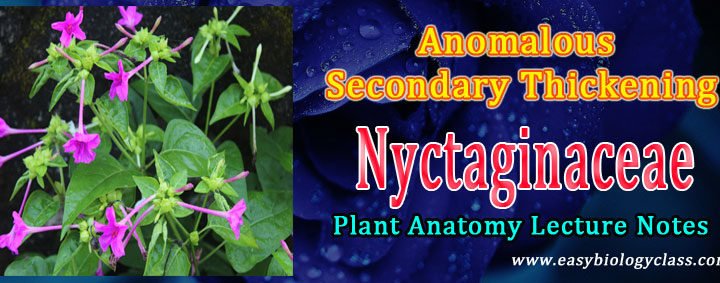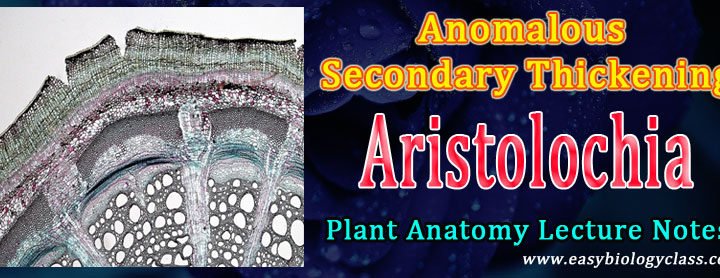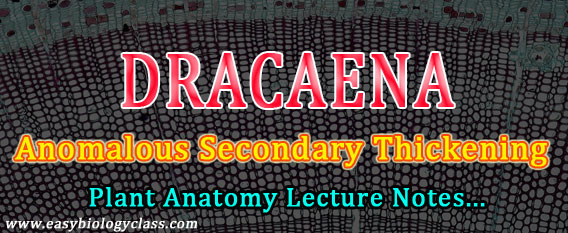In many dicots, the root functions as a storage region. The secondary growth in these storage roots is usually anomalous type. Example: Secondary thickening in Beta vulgaris (Beetroot – Chenopodiaceae) and Secondary thickening in Ipomoea batatas (Sweet potato – Convolvulaceae) The present post discusses the Anomalous Secondary Growth in Beetroot […]
Continue ReadingTag Archives: Plant Anatomy Lecture Notes
Anomalous Secondary Thickening in Mirabilis / Nyctanthes (Nyctaginaceae)
Mirabilis jalapa (4 O’clock plant) and Nyctanthes belongs to the family Nyctaginaceae. In the previous post we discussed the anomalous secondary thickening in Amaranthus / Achyranthes (Amaranthaceae). Similar to Amaranthus, the secondary thickening in Mirabilis and Nyctanthes also occurs due to the formation of accessory cambia formed external to the […]
Continue ReadingAnomalous Secondary Thickening in Amaranthus and Achyranthes Stem
Anomalous secondary thickening in Amaranthus and Achyranthes occurs due to the abnormal activity of an abnormal cambium. Here, new cambial rings are formed from the cortex or pericycle after the older cambium has ceased its functioning. The new cambial strip formed also behaves abnormally. This type of anomalous secondary thickening […]
Continue ReadingAnomalous Secondary Thickening in Aristolochia Stem
Aristolochia (Family: Aristolochiaceae) is a climber and the pattern of secondary thickening in the stem of Aristolochia helps its twining habitat. In Aristolochia, the cambium is normal but showing abnormal activity. During the secondary growth, the normal cambial ring is formed by the fusion of fascicular and inter-fascicular cambium. However, […]
Continue ReadingAnomalous Secondary Growth in Dracaena
Secondary thickening in monocot plants is a rare phenomenon that occurs in only a few species, such as Dracaena, Yucca, and Agave. Unlike most monocots, which exhibit limited or no secondary growth, these plants have the ability to produce new vascular tissues and increase their stem girth over time. Interestingly, […]
Continue Reading



